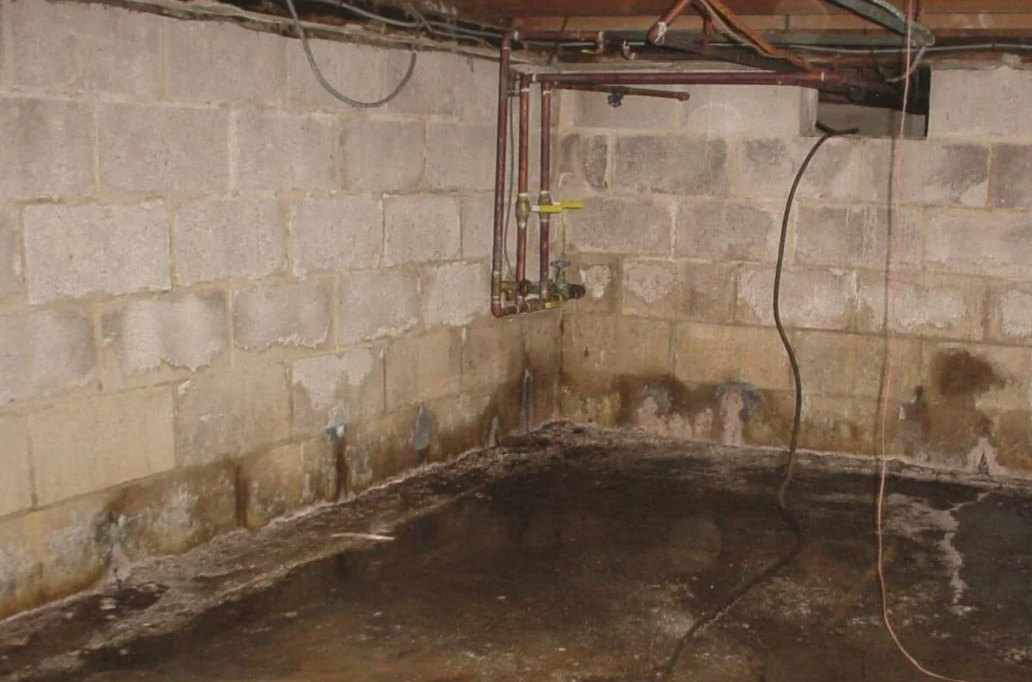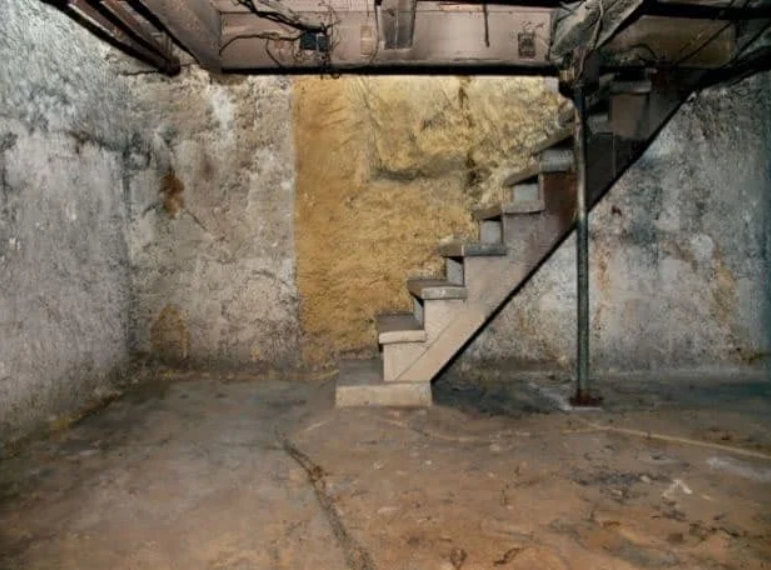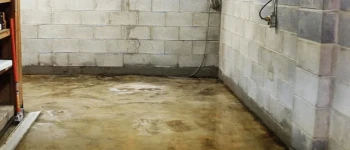When you’re buying a home, it’s crucial to understand the basement’s condition and potential pitfalls. A home inspector typically scrutinizes the basement for things like structural problems, signs of water damage, and electrical safety. They’re checking for cracks in the walls, signs of mold, and making sure the wiring isn’t a fire waiting to happen. But what else might they find that you’re not expecting? Stick around and we’ll shed some light on the lesser-known issues home inspectors look for in basements.
Key Takeaways
- Home inspectors evaluate the basement’s layout and potential for renovation, including its structure, natural light, and infrastructure condition.
- They identify signs of water damage and moisture problems, checking for water stains, mold growth, and excessive condensation.
- The inspection includes assessing the electrical systems for damaged or outdated wiring, organization, and the condition of circuit breakers.
- Inspectors look for proper insulation and ventilation, signs of pest infestations, and check the seals around windows and doors.
- Lastly, they assess the sewage and drainage systems for blockages or leaks and recognize potential fire hazards like outdated wiring and improperly stored flammable materials.
Understanding Basement Inspections
Delving into the realm of basement inspections, it’s important to understand that this process isn’t as straightforward as it may seem. You’re not just considering the current state of the basement, but also its renovation potential, and how the basement layout could impact that potential.
Firstly, consider the layout. An open plan basement has a greater renovation potential compared to one with a lot of walls or built-in structures. You need to assess the amount of natural light, ceiling height, and available space. These factors significantly influence the basement’s adaptability for future renovations, whether you’re considering a home theatre, a guest suite, or a home gym.
However, the basement layout isn’t the only consideration. You also need to examine the current state of the infrastructure. This includes evaluating the electrical wiring, plumbing, and HVAC systems. These are key elements that could potentially limit your renovation options.
Furthermore, you need to factor in the cost of potential upgrades or repairs. A basement with a good layout but poor infrastructure may end up costing you more in the long run.
Therefore, a thorough basement inspection is a crucial step before proceeding with any renovation plans.
Identifying Water Damage
While considering the layout and infrastructure is important, another key aspect to focus on during a basement inspection is identifying any signs of water damage.
Water damage can’t only degrade the structure of your home but also pose serious health risks if left unattended.
One of the most visible signs you should look for is water stains. These can appear on walls, ceilings or floors, and can range from slight discolorations to clear signs of puddles or flood lines. They’re often a telltale sign of a previous or ongoing water issue.
Don’t just rely on visuals, though. Your sense of smell can be a powerful tool in detecting water damage. A damp smell, often described as musty or moldy, is frequently associated with water damage. This scent can linger even after the visible signs of water damage have been cleaned up or painted over.
Lastly, always remember to inspect for dampness. Even if there aren’t any visible signs of water stains or a damp smell, the presence of moisture can indicate a water issue.
Feel the walls and floor for dampness, and pay close attention to areas around pipes and windows.
Signs of Structural Issues
As you progress in your home inspection journey, it’s crucial to spot structural issues early on.
Watch for foundation cracks and wall bulges, as these can indicate serious problems.
In addition, don’t ignore moisture issues as they can compromise the integrity of your home’s structure.
Spotting Foundation Cracks
Your home’s foundation is its backbone, and spotting cracks or flaws can be a telltale sign of structural issues. It’s crucial to understand that not all cracks are indicative of problems. However, some can signal foundation settlement, a serious concern that needs immediate attention.
Crack types vary, and a home inspector will be able to identify them. Vertical cracks often occur from settlement, while horizontal ones could hint at soil pressure. Diagonal cracks typically mean differential settling, which is when one part of the house settles more than others.
When you’re examining your basement, look closely at the foundation walls. Cracks wider than 1/8 inch or those with noticeable displacement should raise an eyebrow.
Also, be wary of stair-step cracks in block or brick foundations. These can indicate significant movement, and you’ll want to get that checked out.
Understanding Wall Bulges
Recognizing the warning signs of structural issues in a home’s basement is a homeowner’s first line of defense. One key sign you should be aware of is wall bulges. These irregularities in your basement walls are more than cosmetic flaws; they may indicate serious structural problems affecting wall stability.
The causes of wall bulges are varied. They can stem from a combination of water pressure, soil movement, and even inadequate construction techniques. As the pressure from the soil outside your basement increases, it can push against the wall, causing it to bow or bulge. If not addressed promptly, this can lead to significant damage and potentially costly repairs.
When inspecting for bulges, look for areas where the wall curves outward or has a noticeable deformity. It’s not enough to just see a bulge; you need to understand what’s causing it.
This is where a professional home inspector becomes invaluable. They’ve the knowledge and expertise to identify bulge causes and assess their impact on wall stability.
Identifying Moisture Problems
When it comes to basement inspections, spotting moisture problems early on can save you a considerable amount of time, effort, and money. Moisture issues can lead to mold growth and high humidity levels, both of which can damage your home’s structure and pose health risks.
Mold growth is typically a sign of persistent dampness in your basement. It can be seen as dark, fuzzy spots on walls, floors, or ceilings. High humidity levels, on the other hand, can make your basement feel damp and musty. It can also cause condensation on your windows and pipes.
You can keep track of the warning signs for moisture problems using the following table:
| Warning Signs | Possible Causes |
|---|---|
| Dark, fuzzy spots (mold growth) | Persistent dampness |
| Damp, musty smell | High humidity levels |
| Condensation on windows and pipes | High humidity levels |
Evaluating Electrical Systems
As you transition your focus to evaluating electrical systems in basements, there are three key areas to consider.
Pay attention to inspecting electrical wiring, as old or faulty wires can pose serious safety risks.
Don’t overlook assessing circuit breakers and detecting ground faults, crucial parts to ensure a safe and functional basement.
Inspecting Electrical Wiring
In the realm of home inspections, your attention should turn next to the crucial task of inspecting electrical wiring. Wiring safety is paramount to the overall health of the home’s electrical system. You’re not just looking for visible signs of wear and tear, but for potential hazards hidden beneath the surface.
You should start with a visual inspection, checking for any signs of damaged or frayed wires, which can pose a significant safety risk. If you spot outdated knob-and-tube wiring, that’s an immediate red flag. It’s not up to code and may indicate the need for electrical upgrades.
Next, take note of the general organization of the wiring. Are the wires neatly arranged and secured, or are they tangled and disorganized? The latter could be a sign of a haphazard installation, which may lead to problems down the line.
Assessing Circuit Breakers
Moving forward from inspecting wiring, your role as a home inspector also involves assessing the home’s circuit breakers. This crucial part of the home’s electrical system can tell you a lot about its overall health and safety.
Here are four key things to look for:
- Circuit Breaker Types: There are various types of circuit breakers, including standard, ground fault circuit interrupters (GFCIs), and arc fault circuit interrupters (AFCIs). Recognizing the types present in a home can give you insight into the age and safety of the electrical system.
- Proper Labeling: Each circuit breaker should be clearly labeled, indicating which area of the home it controls. This shows careful maintenance and can make troubleshooting easier in the future.
- Signs of Damage or Wear: Look for signs of overheating, corrosion, or other damage. These could indicate serious safety issues that need immediate attention.
- Electrical Load: Ensure that the electrical load is properly distributed among the circuit breakers. Overloading can lead to frequent tripping, which can wear out a breaker over time.
Your detailed assessment of circuit breakers helps ensure the safety and efficiency of a home’s electrical system.
Detecting Ground Faults
While you’re thoroughly inspecting a home’s electrical system, it’s crucial to pay special attention to detecting ground faults. Ground faults are a common electrical problem that can compromise electrical safety in a home.
When you’re inspecting the basement, be on the lookout for signs of ground faults, such as flickering lights, outlets that are hot to the touch, or circuit breakers that frequently trip. If you notice any of these signs, it’s possible that there’s a ground fault somewhere in the electrical system.
Here’s a handy table to help you remember the common signs of ground faults:
| Signs of Ground Faults | What It Means | What To Do |
|---|---|---|
| Flickering Lights | Possible ground fault | Investigate further |
| Hot Outlets | Possible ground fault | Investigate further |
| Frequently Tripped Breakers | Possible ground fault | Investigate further |
Checking Insulation and Ventilation
Peering into the darker corners of a basement, your attention should first be drawn to the insulation and ventilation systems in place. These systems are crucial for maintaining a comfortable and safe environment in your home.
- Insulation types: Check for the presence and condition of different insulation types. The most common are fiberglass, mineral wool, and cellulose. Depending on the age and quality, insulation can deteriorate or become less effective over time. It’s your role to spot any issues and suggest remedial actions.
- Ventilation methods: Basements need proper ventilation to prevent dampness, mold growth, and poor air quality. Look for exhaust fans, vents, and other ventilation methods. If these are lacking or ineffective, it’s a major concern that needs addressing.
- Sealant around windows and doors: Even with good insulation and ventilation, a drafty window or door can undermine your efforts. Inspect the seals around these areas to ensure they’re intact.
- HVAC system: Finally, check the heating, ventilation, and air conditioning system. It should be in good condition, well-maintained, and appropriately sized for the basement area.
Looking for Pest Infestations
After inspecting the insulation and ventilation, it’s crucial to turn your attention to potential pest infestations. In basements, common pest types include rodents, termites, and various insects such as ants and spiders.
Watch for signs like droppings, chewed wires or wood, and termite mud tubes. Listen for scurrying sounds and look for nests in hidden corners. Termites, a major concern, can cause significant structural damage. They often leave behind mud tubes on walls, a definite red flag.
Prevention methods are key in dealing with pests. Sealing any cracks or holes in the basement walls, floors, and around windows can deter entry. Regularly removing clutter reduces hiding places for pests, while fixing leaks and maintaining low humidity levels discourage pest habitation.
Consider pest control measures like traps and pesticide applications, but remember, these are often temporary solutions. For a thorough pest inspection and long-term prevention plan, consult a licensed pest control professional.
They can identify specific pest types and suggest appropriate prevention methods.
Assessing Sewage and Drainage
In the course of a thorough basement inspection, moving onto the assessment of sewage and drainage systems is essential. These systems are integral to a home’s sanitation and comfort.
As a homeowner, you need to ensure they function correctly to avoid costly repairs or health hazards. Therefore, understanding what inspectors look for can be immensely beneficial.
Here are four critical areas of focus:
- Sewage Systems: Inspectors will check for blockages, leaks, or damage in the system. They’ll also look at the integrity of the pipes and the functionality of the pump system, if present.
- Drainage Solutions: Effective drainage solutions, like French drains or sump pumps, are vital for preventing water damage in your basement. Inspectors will assess their condition and efficiency.
- Odors and Dampness: Unusual smells or dampness can indicate problems with either the sewage or drainage systems. Inspectors will take note of these signs.
- Maintenance Records: If available, inspectors will review the servicing and maintenance records of these systems for any recurring issues.
Having a well-functioning sewage and drainage system is paramount. By knowing what inspectors look for, you’re one step ahead in maintaining your home’s value and safety.
Recognizing Potential Fire Hazards
Moving on to another crucial aspect of basement inspections, it’s time to focus on recognizing potential fire hazards. You’re looking for anything that could potentially ignite a fire or hinder your ability to escape in the event of an emergency.
Firstly, fire safety involves checking for any flammable materials stored improperly. It’s not uncommon to find cleaning supplies, paints, or old newspapers stashed away in basements. These items should be kept in designated, safe storage areas away from heat sources like furnaces or water heaters.
Next, you need to inspect the electrical system. Outdated wiring or overloaded circuits are common fire hazards. Look for frayed cords, overloaded outlets, or flickering lights as these could indicate a serious problem.
Lastly, ensure there’s adequate access to emergency exits. Basements often have limited egress points, which can turn deadly during a fire. There should be at least one easily accessible, unobstructed exit.
Check for clear pathways, functional doors, and windows large enough for a person to fit through.
In conclusion, a thorough basement inspection is crucial when buying a home. Remember, inspectors are on the lookout for structural issues, water damage, and electrical safety concerns. They’ll also assess insulation, ventilation, and potential pest infestations. Problems with sewage and drainage, as well as any potential fire hazards, won’t go unnoticed. Understanding what they’re looking for can help you anticipate any issues and plan for potential repairs or negotiations.





